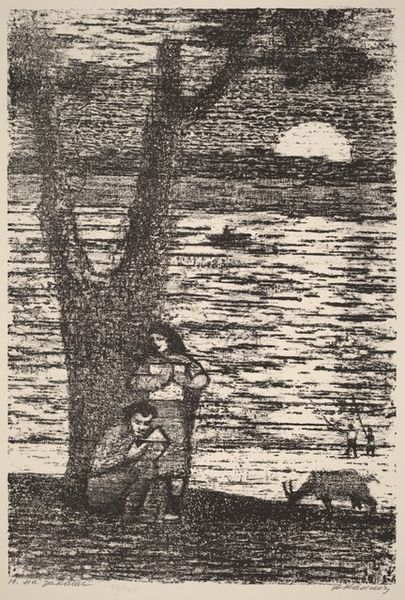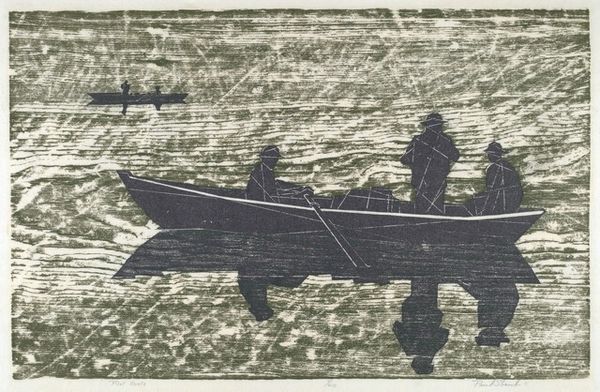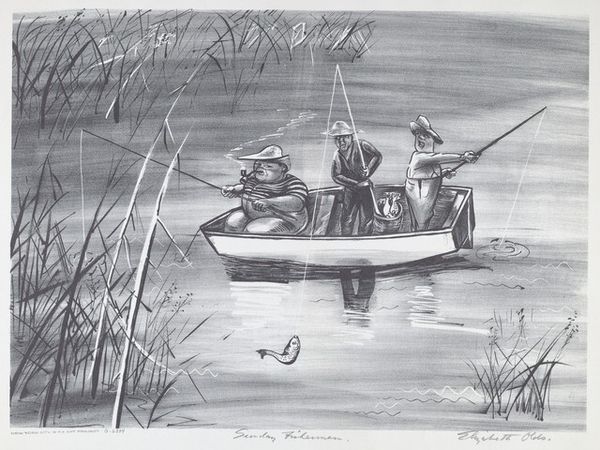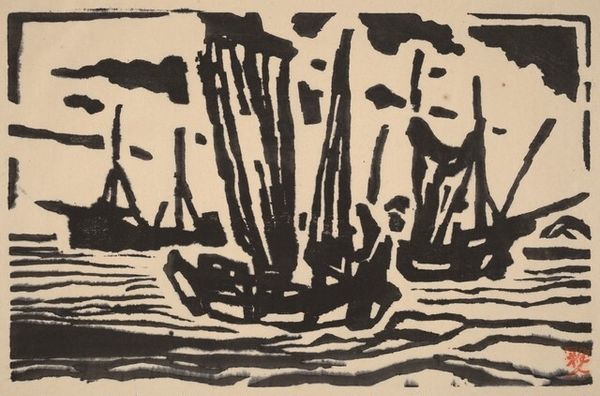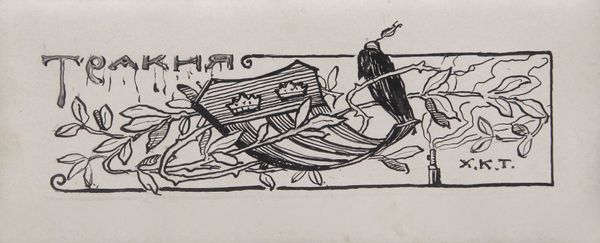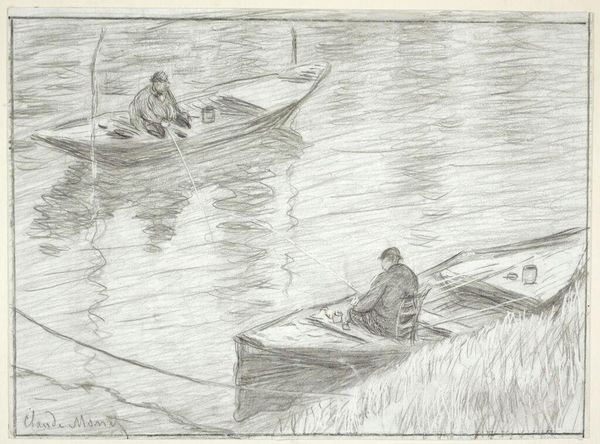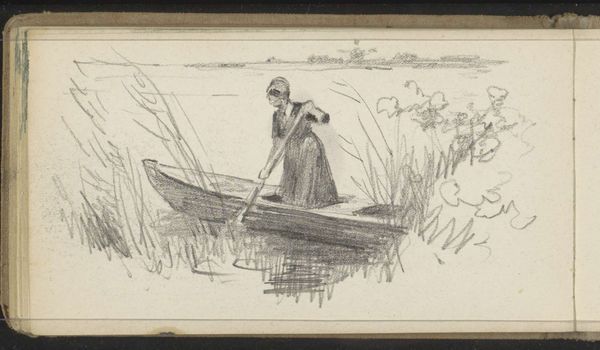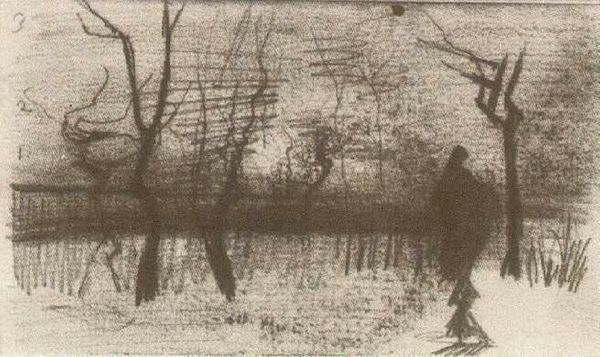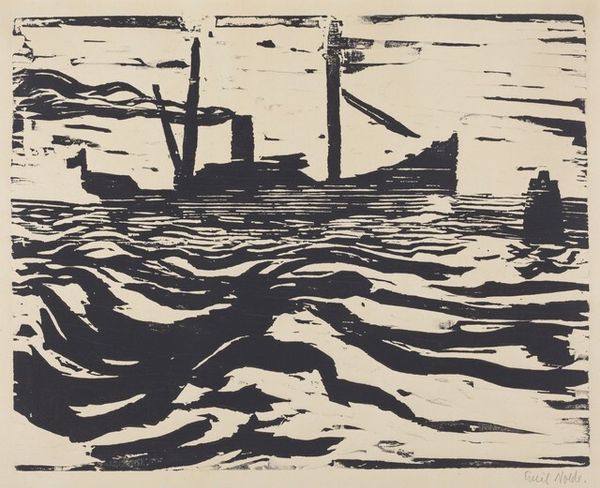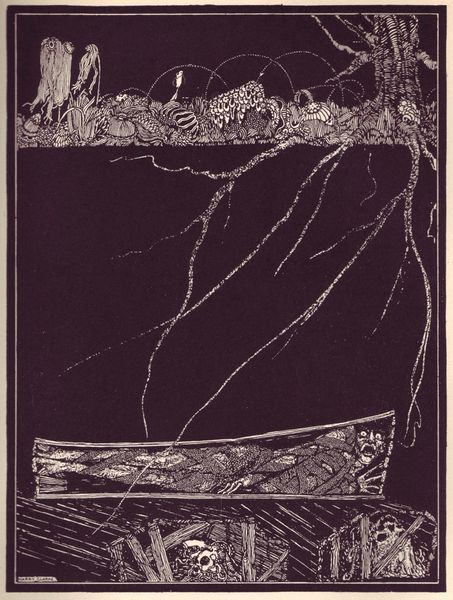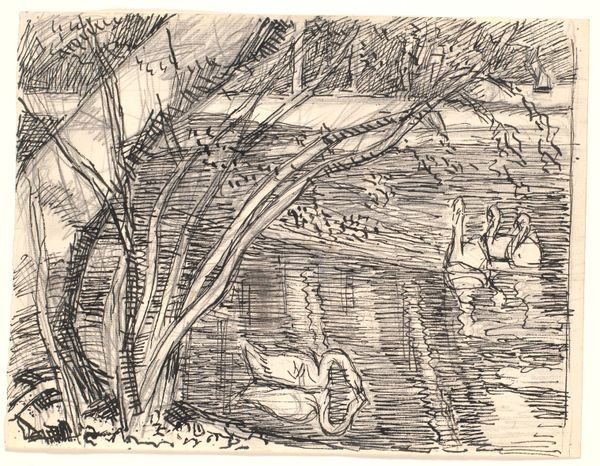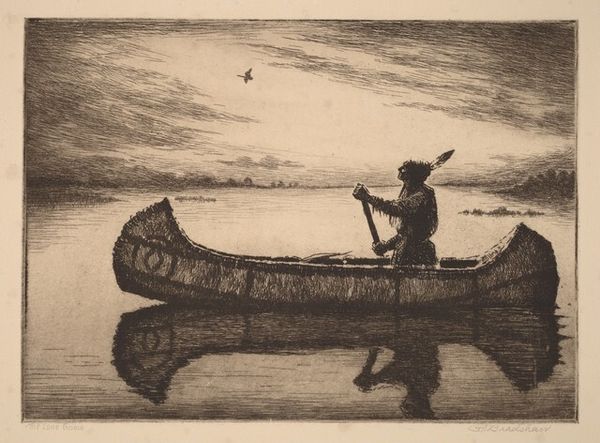
drawing, print, ink, woodcut
#
drawing
#
boat
#
narrative-art
# print
#
pen illustration
#
vehicle
#
landscape
#
ink line art
#
ink
#
woodcut
#
water
#
pen work
#
russian-avant-garde
#
realism
Copyright: Public domain
Editor: Here we have Boris Kustodiev’s illustration for Nikolay Nekrasov's poem "Grandfather Mazay and the Hares," created in 1908, using ink, woodcut, and printmaking techniques. It's a stark black and white image, and I’m immediately struck by how the artist uses all these intricate lines to create texture and depth, it almost feels claustrophobic. What do you see in this piece, beyond the technical skill? Curator: This piece, beyond its illustrative purpose, speaks to the precarious relationship between humans and the natural world. Kustodiev offers us a glimpse into the narrative, and into a world where Grandfather Mazay actively intervenes to save these creatures. It highlights an engagement with the sociopolitical debates surrounding animal welfare. Editor: That’s a good point. I hadn’t really thought about it in terms of animal rights. Curator: Think about the period, too. The late 19th and early 20th centuries saw growing concern around industrialization and its impact on the environment, so we can interpret this scene of salvation as a comment on wider ecological issues and, perhaps, a reflection on the disruptive effects of industrial development on animal habitats, and a call for empathy. What do you think about how he used this highly contrasting and detailed aesthetic to express such ideas? Editor: Now that you mention it, the limited color palette combined with the high level of detail enhances the tension, it amplifies that sense of fragility that the hares in the boat must feel. And maybe Kustodiev used a Realist style to make his message seem even more applicable to everyday life at the time. Curator: Exactly. The artistic choice echoes the broader artistic and intellectual movements which is tied to socialist ideology, of a populist movement seeking to connect art with the realities and experiences of common people. I like your interpretation, too, of fragility and how this image renders an accessible view into a debate with social implications. Editor: It’s amazing how much historical and social context can change the way you view a work of art. Thanks for showing me that today!
Comments
No comments
Be the first to comment and join the conversation on the ultimate creative platform.
